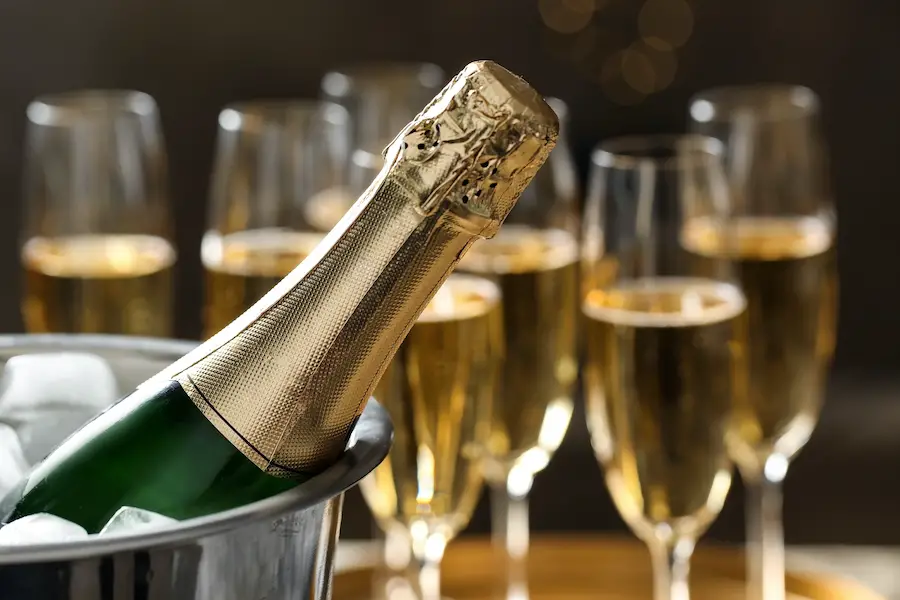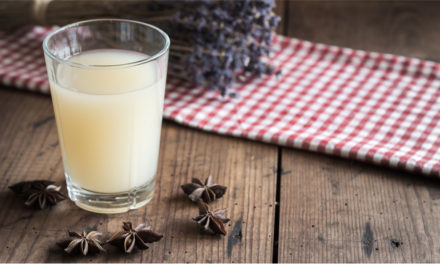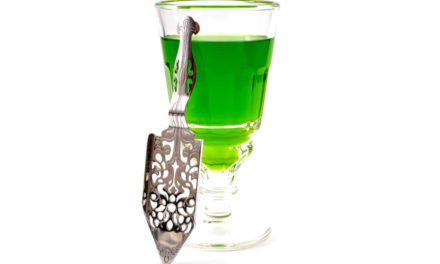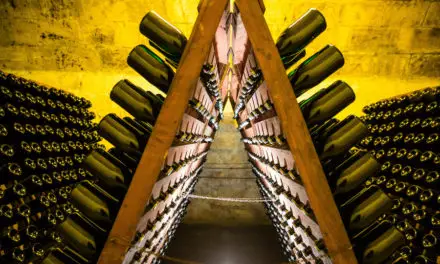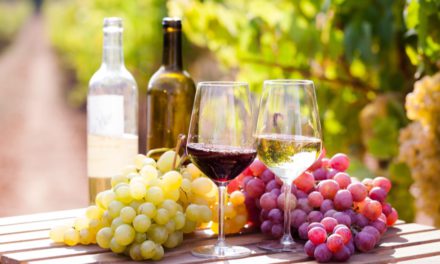I’m sure you have read about Champagne, and probably you already bought one or two bottles considering that we are approaching the Christmas Holidays and New Year’s. Great! I did too. But did you know that Champagne comes from France and France only? Keep reading and you will find the answer to this and 7 other questions that probably will come out along the way.
What is Champagne made of?
Champagne as any other wine is made of grapes, and although there are 7 different authorized grape strains the 3 mainly use are Chardonnay, Pinot Noir and Pinot Meunier. The other four are, Arbane, Petit Meslier, Pinot Blanc and Pinot Gris.
Champagne is usually the mix of different grapes, but sometimes you will see in the label that says “Blanc de Blancs” (White of Whites) or “Blanc de Noires” (White of Blacks), meaning the wine was made exclusively of white grapes, being usually the case Chardonnay, for the first and black grapes for the later.
How champagne is made?
Champagne production varies from a normal wine given the fact that the Champagne producers objective is to keep CO2 gas within the liquid.
At the beginning it all starts like any other wine. First let’s clarify that Champagne doesn’t allow the injection of CO2 so they must do it naturally. Accordingly, in order to achieve this, the producers, follow two fermentation processes, being the first one done in tanks like usually is for most of wines, and the second one inside the bottles.
Right between the two fermentation processes, the blending occurs. After the blending has finished, the second fermentation begins, and to help it start producers add sugar and yeast once more. This process comes together with the aging process. The fabrication has almost finished.
Once yeast has finished eating all the sugars and releasing CO2, the “Dégorgement” (disgorgement) starts. This process is important because the date is indicated in the label, and it has a lot of information for the consumer. Basically, is removing what remains of sediments and a little of liqueur is added (wine and sugar), resulting in the defining of the type of Champagne obtained.
What is Champagne disgorgement date?
Like I said before, the disgorgement date is when sediment of yeast is removed from the Champagne. Why is it important?
First, if it is a Champagne “Millésimé” (with a year). You would have the harvest year in the front of the bottle, and the disgorgement date in the back, the difference of the two would give you the number of years the wine has been aged for.
Second, in the case of a Champagne without a year, it would always give the harvest year taken as base, normally would be 15 months before the disgorgement date, and would indicate the freshness of the wine, meaning closer the date to your actual date, fresher is the wine. For example, if you have disgorgement date 2022, the harvest year base is 2020.
Who invented champagne?
At the beginning, Champagne wine was no different than any other wine produced in France. But the producers of Champagne region, identified that because of cold temperatures at the beginning of autumn, sometimes the fermentation process stopped, and it restarted in spring. During the restarting process, gas was created but it evaporated through the wood crafts. Soon they started to look for ways to keep the gas.
Legend has it that a monk named Dom Perignon was behind the invention of Champagne as we know it today. The truth is that it took centuries for the people of Champagne wine-growing region to perfectionate the process of the effervescence.
Even though the gas creation during fermentation exists in all the world, the people of Champagne were the first to perfectionate the process and to commercialise it.
Where does Champagne come from?
As you have already guessed it, Champagne comes from the Champagne wine-growing region. Is a protected designation of origin (PDO) area that comprises 5 different departments in the modern administrative division of France, La Marne, l’Aube, l’Aisne, la Haute-Marne et la Seine-et-Marne. All these territories belonged to the ancient French province Champagne, region famous for being the place where the “mousseux wine” symbol of partying and the life of luxury and success was invented. How did this specific wine become such a symbol you may ask. Well, Champagne wine was intrinsically linked to French royalty from its beginnings with the birth of the Kingdom of France, as Clovis I was baptized in Reims, Marne. Soon the wine of Champagne became the “wine of kings”.
Which are the champagne sub regions?
Even though Champagne is produced in the 5 departments mentioned above. The wine-growing region is delimited, comprising 34 000 hectares (340 square kilometers) and subdivided into 4 wine-growing sub-regions known as La Montagne de Reims, La Vallée de la Marne, La Côte des Blancs and La Côte des Bar.
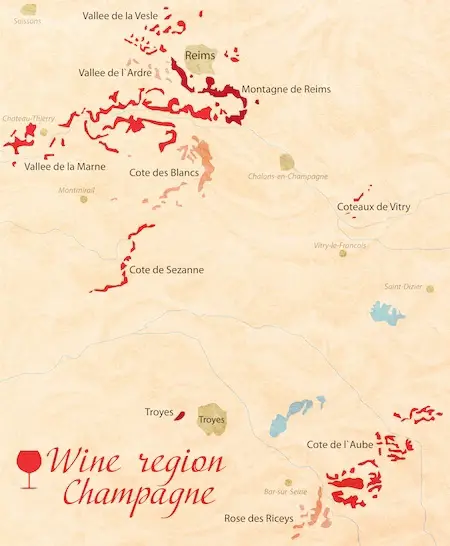
How many champagne producers are in France?
Inside these 4 wine-growing subregions we can find almost 281 000 parcels with approximately 1200 square meters each. Distributed in 319 different localities or communities. In the 319 wine-growing communities, we can find almost 16 200 winegrowers, some of them produce the wine themselves, others, work within 130 different Champagne cooperatives and the rest sell the grapes to any of the 370 “Maisons” (Champagne-producing houses). Overall, the production in France is around 300 million bottles of Champagne wine per year.
Of which the 44% stays in France and the rest are exported. Given that in France there is 67.8 million people, that means that in average the French drink almost 2 bottles of Champagne per year. The main Champagne export countries in order of importance are, U.S., U.K., Japan, and Germany, Belgium, Australia, Italy, Switzerland, Spain and the Netherlands.
Just to clarify a little bit, in France we have around 14 wine-growing regions, you can read more about it in French Wine Basics: French Wine Regions. Each wine region has its own specialties and way of classification. Being one of them Champagne wine-growing region. Which in turn is subdivided in 319 communes, distributed in 4 subregions mentioned before. That’s better, is it not?
But we haven’t finished. In the blog post French Wine Basics: Wine classification according to the French, we talked about the different classification of Champagne wines, in Grand Crus, Premier Cru and Cru. So, you may ask.
What is a Cru in Champagne?
Cru is one of the 319 wine-growing communities, where the “terroir” is clearly identifiable. Historically the divisions of Cru’s where made based in a specific and measurable quality of its “terroir”. Meaning that the Grands Cru, represented the wine-growing communities with 100% of the parameters required for a total quality grape. Le premiers Cru where in second with a score of 90%-99%, and at the base of the pyramid les Cru with 80%-89%.
Just to be clear, the term “Cru”, refers to the territory, therefore the quality of the grape not the quality of the Champagne. Obviously, being the grape the principal ingredient, it has a direct impact in the final quality of the Champagne.
The truth is that there is so many different Champagnes that better to start tasting to find the one that you like the best. If you want a little bit of help you can find a tiny guide in here https://www.champagne.fr/en/champagne-tasting/choosing-your-champagne
Cheers!

